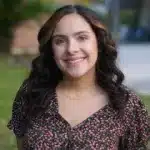Tulum’s Dilemma: The Environmental Toll Behind the ‘Eco-Chic’ Facade
Tulum’s rising popularity is coming at a very steep cost. The environment and local communities bear the brunt of unregulated growth.

Tulum is known as one of the most naturally beautiful and well-known destinations for people from all over the world. The beautiful beaches, “eco-friendly” lifestyle, low cost of goods, and abundance of culture make it the perfect Mexican paradise destination. But there is an ugly truth that’s being ignored.
With a booming influx of tourists, investors, expats, and floating residents, the once-small Mexican village is now a tourist haven that’s becoming unrecognizable by the day. Since 2010, the population in Tulum has increased by 65%. There’s no doubting Tulum’s attractiveness, but there’s a price for paradise, and the environment and the local residents are paying the tab.

Fake Eco-Tourism
“Greenwashing” is a term that’s grown substantially in the past decade. The term refers to false or misleading marketing tactics that businesses use to market themselves as environmentally sustainable/friendly without actually making investments into business practices that help them deliver on those eco-friendly promises.
Many of Tulum’s newer residents have come from all over the world, opening new businesses, buying real estate, and driving tourism into the town. Though business might be booming, Tulum’s local infrastructure is struggling to catch up with the demands. The lack of infrastructure directly contributes to the environmental devastation occurring on a large scale across Tulum.
The Yucatán contains the largest underground freshwater system in the world and was especially important to the Mayans as they utilized the cenotes, or sinkholes, that formed along the Yucatán as their main water source. The Mayans also believed that the cenotes acted as gateways to the underworld, where their gods and spirits rested. Nowadays, tourists see those same cenotes as an attraction to experience and a perfect backdrop for social media posts, but recent findings show that as much as 80% of the cenotes are polluted due to improper disposal of garbage, pesticides, and even raw sewage.

Along with the lack of infrastructure exists the sewage issue: much of Tulum’s “eco-friendly” resorts don’t have adequate sewage, and many of the new construction projects aren’t being connected to an existing network that can sustain the current population, let alone the ever-expanding foreign population.
It’s estimated that as many as 80% of Tulum’s resorts do not have adequate sewage, leading to the contamination of the aforementioned Yucatán. Many of the beloved, trendy places to visit run on gas generators, leading to both noise and air pollution to power most of Tulum beach. The failure of the notoriously corrupt local and federal government to enact and enforce legislation to protect Tulum’s environment is a direct cause of this, with developers paying top dollar to local officials who are all too happy to develop the land as quickly as possible.
There are also large economic impacts with the rise of newcomers to Tulum: many of the high-priced boutique hotels, vegan restaurants, yoga studios, and more that continue to draw in the “eco chic” tourists don’t actually generate any economic development opportunities for the locals. With many of the “eco-friendly” resorts charging nightly rates comparable to those of major U.S cities like New York and Los Angeles, the employees, local to the area, aren’t seeing their wages rise to reflect that.
The average monthly wage in Tulum is reported at 8,040 pesos, which, in today’s exchange rate, is 460 dollars. Worse yet, that wage rate has remained largely unchanged since 2011.
Instead, we’re seeing wealthy expats lining their pockets, and those of the local politicians and cartels, with the profit of their earnings while the local economy continues to stagnate in poverty wages. Without policies protecting workers, the environment, and local infrastructure, Tulum is destined to become a wasteland that won’t ever be recovered.
Challenges Amidst the Tourist Boom

Tulum has a brand-new international airport, and while the airport currently handles domestic flights exclusively, the outset of international flights has been scheduled for March 2024.
Simultaneously, the Mayan Train project unfolds—a colossal 1,500-kilometer railway connecting Palenque to Chetumal. This route goes through biological reserves, indigenous communities, and archaeological sites.
The inaugural phase, which spans 892 kilometers from Palenque to Cancún, was opened in December 2023. The following sections are expected to be open by February 2024.
Concerns loom large about the impact of new access roads that greenlight excessive growth that does not take into account strategic planning to prioritize the authentic and sustainable well-being of the local community and the environment. Striking a balance is crucial to prevent the compromise of Yucatán’s rich cultural, biological, and environmental heritage.
The Future
There’s light at the end of the tunnel, though. Reports have found cleanups are underway for some cenotes in both Tulum and nearby Cancun, where high contamination rates were cited as risks for human health and the environment. The biggest factor in changing Tulum’s local economy, however, lies in tourists’ hands.
While some tourists are attracted to “eco-friendly” travel, many aren’t doing the work to verify if these places are truly practicing what they preach. By looking for sustainable green and red flags when traveling, consumers can hold these resorts accountable for their environmentally friendly images and decide if they actually deserve their money.
Staying at resorts that utilize renewable energy sources such as solar or wind energy, limit electricity usage (common in tropical communities), provide water purification services, and practice responsible sewage practices that don’t damage the local ecosystem are all ways of supporting the right kinds of business.
When in doubt, opt out of that trendy vegan place and look to support something locally owned that benefits Tulum’s local community. Listening to and respecting indigenous communities advocating for their environment is one of the most vital pieces of the puzzle, as these communities are disproportionately impacted by environmental devastation.
Consumers have a lot more power than they think. The power of the wallet can send a clear message that places like Tulum should be protected, and the money will stop flowing without that. Ultimately, it’s up to individuals to care more about respecting the environment and the residents than their Instagram posts.




